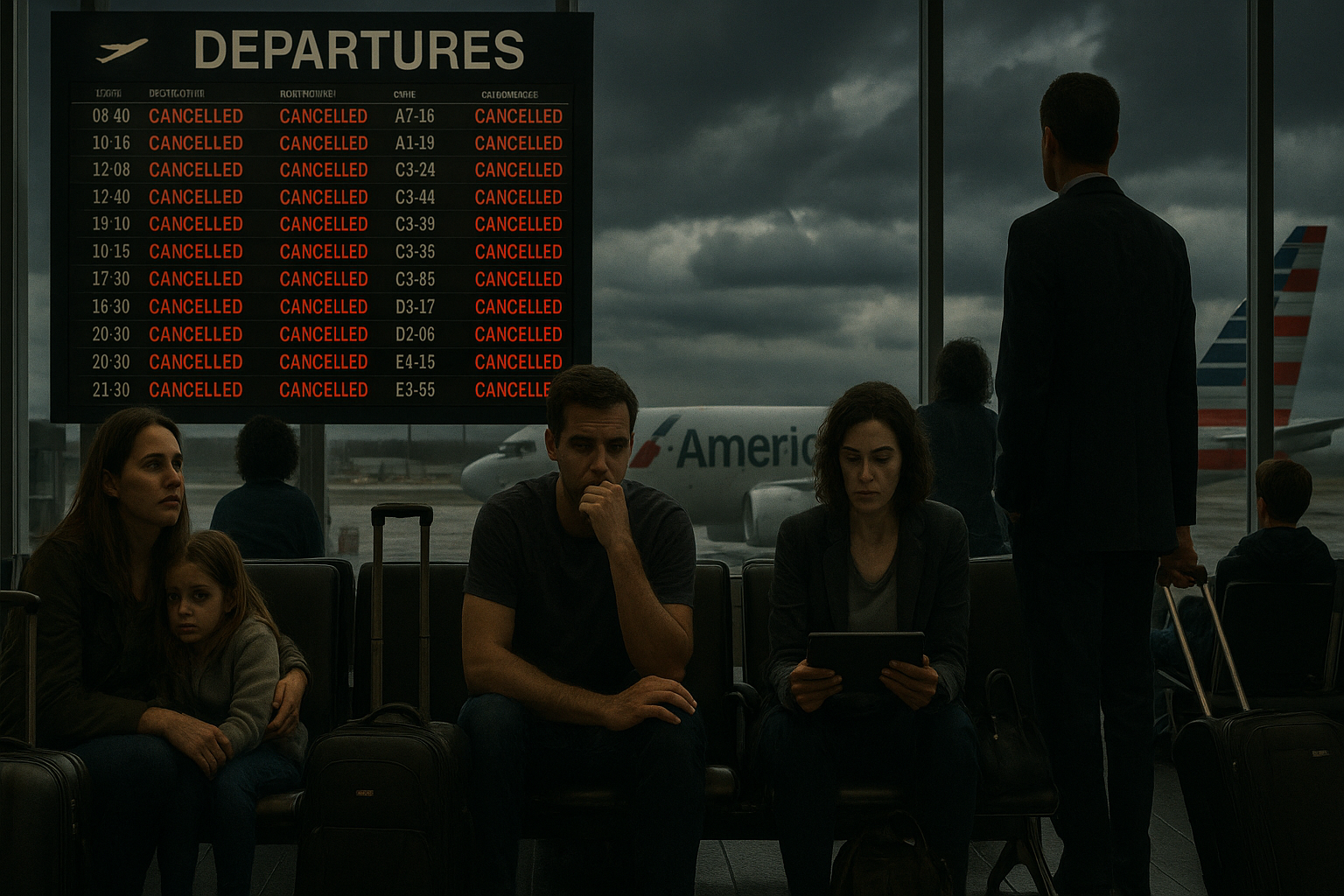If you're reading this while stuck at an airport gate today (July 22, 2025), you have my deepest sympathies. American Airlines has canceled a significant number of flights across their network, leaving thousands of travelers scrambling to salvage their plans.
What's Happening Now
American is citing the usual suspects - staffing shortages and weather issues - for today's operational meltdown. While these factors are certainly real (the thunderstorms moving through the Midwest are particularly nasty), they highlight the razor-thin margins of error in today's aviation system.
I checked the flight boards this morning, and the sea of red "Canceled" notifications was striking. The timing couldn't be worse, coming during the peak summer travel season when planes are packed and rebooking options limited.
Passenger Impact
The human cost of these disruptions goes beyond mere inconvenience. I spoke with the Rodriguez family at Dallas-Fort Worth International this morning - they were trying to reach a family reunion in Boston and now face missing the entire event. Business travelers are missing critical meetings, and connecting passengers face particularly complex rebooking challenges.
"We've been here for six hours, and still don't know when - or if - we'll get out today," said Michael Rodriguez, visibly frustrated as his children played with their tablets on the terminal floor.
Industry Context
Aviation analyst Sarah Johnson provided some perspective: "The recent cancellations by American Airlines reflect broader operational challenges facing the industry. As airlines strive to balance capacity and demand, disruptions are likely to continue in the near term."
She's right - this isn't just an American Airlines problem. The entire industry continues to struggle with post-pandemic staffing issues. While passenger demand has fully recovered (and then some), the aviation workforce hasn't kept pace. Training pipelines for pilots, mechanics, and air traffic controllers take years to fill, creating persistent bottlenecks.
Global Patterns
These challenges aren't unique to American carriers. Just last month, I experienced similar disruptions while flying through Europe, and Asian carriers have reported their own operational challenges. The global aviation system seems caught in a difficult transition period - trying to meet robust demand with infrastructure and staffing that haven't fully recovered from pandemic cuts.
What Can Travelers Do?
If you're caught in today's disruptions - or worried about future travel - here are some practical steps:
- Download your airline's app for the fastest notifications and rebooking options
- Consider travel insurance for important trips (though read the fine print carefully)
- Build buffer days into critical travel when possible
- Be prepared with alternative airports or routes in major markets
In my experience, maintaining a flexible attitude helps too - though that's admittedly difficult when you're missing important events or connections.
Looking Forward
The aviation industry needs to address these fundamental capacity issues to avoid making flight disruptions the "new normal." Technology investments might help - better predictive tools for staffing and maintenance could reduce some cancellations. But ultimately, this comes down to having enough trained personnel throughout the system.
For today's stranded passengers, that long-term outlook offers little comfort. The immediate reality is a day of frustration, unexpected hotel stays, and the increasingly familiar experience of aviation disruption in 2025.
